Review by Aldo Zana
They did it. Perhaps aiming for a world record, author and publisher have created the heaviest, thickest, most detailed, and deeply researched single-volume motor racing history book: 1,080 pages in good English, a thousand of period photos, a hundred of track layouts. “Back on Track: Racing in the 1940s” may be the ultimate reference book on period motor racing.
The author, Alessandro Silva, a member of SAH (Society of Automotive Historians) and AISA (Italian Association for the History of Automobile), is a retired full professor of mathematics who since 1980 until 2015 taught at Italian and U.S. universities and did research work at the Institute for Advanced Study, Princeton N.J. He lectured at many AISA and foreign events and he is the author of books on the racing OMs, published, like this one, by Fondazione Negri, based in Brescia. The book is the result of lifelong research done in his spare time.

Alessandro Silva is a lifelong scholar of motor racing in the Thirties and Forties and has collected a wealth of documents and images.
The scope: track racing from 1945 to 1949 worldwide. And worldwide here really means worldwide; ever heard of period races in Finland, East Germany, Malaysia? They are reported here: chronicle, grid, results, photos. Want to know who Lin Peng Ham was, and what a car he raced on October 2, 1949 at the Johor street circuit, Malaysia, crashing at lap 12 of 15? The answers are at the end of the 149 pages of race results.
The full list of drivers mentioned fills 27 pages. A detailed profile is reserved for the champions, rich on details and biographical anecdotes: who remembers that Alberto Ascari, when at home, went to Mass every Sunday and lit a candle to Sant’Antonio, the eponymous Saint of his father?
Interested in the cars racing in the period? Browse through the 18 pages of cars listed from AFM/BMW F2/49 (Germany) to Volpini-Fiat (Italy). The races of each car are published together with the reference to the chapter dealing with the event. And, for the top-tier cars, even the serial number in each race is listed.
In short, this monumental work, whose cover title is an unassuming: Back on Track: Racing in the 1940s, is the final and total reference on the 1945-1949 circuit racing. And its value goes beyond those early years after WW2 because many of the protagonists remained under the spotlights after the opening of the Driver’s World Championship in 1950.
The image on the book cover (lead image) shows the front of the grid of the Turin Grand Prix, September 1, 1946. Varzi (Alfa Romeo 158 no. 46) won, Wimille (no. 52) was second, Trossi (no. 54) finished sixth, Farina (no. 8) and Sanesi (no. 22) DNF. (For more photos from the book scroll down to Gallery.)
The author selected the races held in Europe, South America, South Africa, Australia, New Zealand, Far East, i.e. everywhere European cars and the European way of racing were implemented. Due to this base selection, no U.S. races are covered in detail aside from the 1946 Indianapolis 500 when two Italians, two Brits, and a German entered there: it was the only significant North-American presence of drivers from the Old Continent. At the end of the book, ten pages deliver a sketchy recap of the AAA championship races in those years, adding a long quote about the opener at Watkins Glen, an oddly long Briggs Cunningham biography, and informative notes on some U.S. drivers connected with the European scenario.
The postwar era of racing began on September 9, 1945 at the Bois de Boulogne in Paris, hardly four months after the end of the war in Europe. It gave the signal that life could start again. The titles of the three races held on the day were a symbol of the recent past: Coupe Robert Benoist (the great French driver murdered by the Nazis as a member of the French Resistance), Coupe de la Libération, Coupe des Prisonniers. It is well know that the latter race saw the final win of a Bugatti, the T59/T50B s/n 50180 driven by Jean-Pierre Wimille. The book states that the race started at 5:45 pm under an overcast sky in front of some 200,000 people. It saw 17 starters and recorded an attrition rate of 59% due to the obsolescence of the cars, idle and hidden for the duration of the war. And nobody could dare to guess the behavior of the tires. Wimille won at 112.8 km/h (70.09 mph) average after 1h 03min 33.3sec. *

A sample page of the section presenting the details of each race covered in the book. Even minor events in far-away locations are duly reported.
All the above just to sample a taste of the wealth of data, information, and results in a book that pushes the envelope of the concept of “reference”. Maybe; such a detailed report on the many French single-seater races in the period has never been published before.
There are some drawbacks in such a masterpiece that complicate the use of the book as a reference. The main difficulty arises from the bulk of the single volume. A split in two/three tomes in the same slipcase would have allowed an easier handling. A name index as such is missing: one has to browse through the list of the drivers to find only the chapter(s) mentioning him without the precise page number. And the name index is not at the end of the book, as it is common practice. The same approach is used for the comprehensive bibliography and the list of venues and circuit maps. The latter is a unique feature that further increases the value of the job.
The graphic layout is closer to an academic study book than a costly edition on motor racing. The single column selected for the main text makes reading sometimes difficult. Another unusual feature is the double-page openers of the chapters: rather small headline and sub-heading on the right and full-page photo (always informative and nice) on the left. The liberal usage of italics makes some long quotes quite difficult to read. Plus one has to go to the list of sources to guess the author.
The book is available in numbered copies of the first printing of 300 items. Size is 9.8 x11.4“ (25×29 cm), weight is 10.6 lbs (4.8 kg), hardbound (a perfect job) in a sturdy slipcase showing the same photo of the cover: a bird’s-eye view of the grid of the 1946 Turin Grand Prix.
With the book, the publisher, Fondazione Negri, adds to a long list of top quality books on cars, trucks and buses, motor races, and Brescia memorabilia.
Alessandro Silva: “Back on Track – Racing in the 1940s”. Fondazione Negri, Brescia, Italy 2019. Pages 1,080. Price in Italy 180 euro.
Contact the publisher for details at info@negri.it
A Gallery from the book, “Back on Track – Racing in the 1940s”
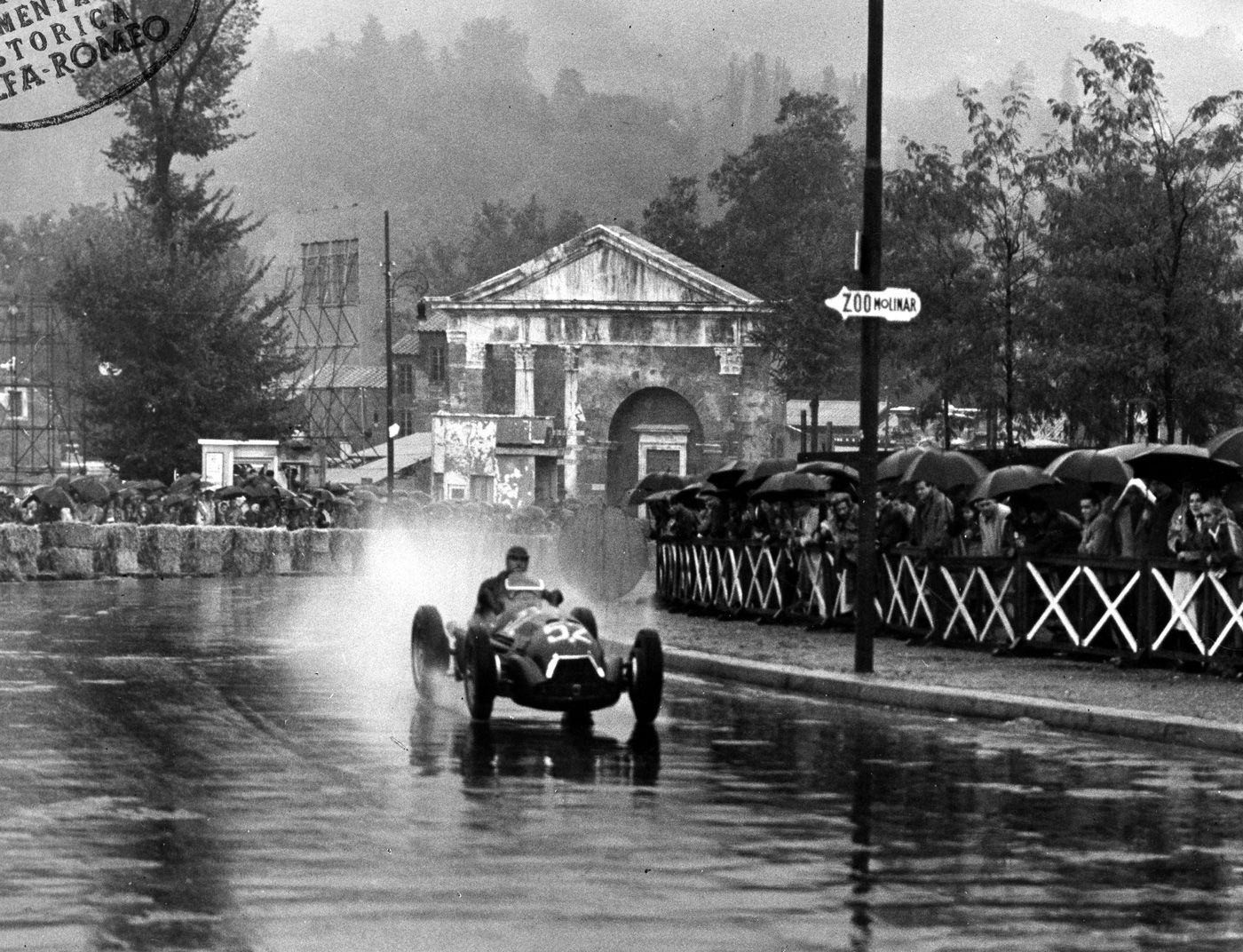
September 1, 1946. Grand Prix racing resumed in Italy, too: at the Circuito del Valentino, Turin, Jean-Pierre Wimille nurses his 158 Alfa Romeo across a heavy downpour. Varzi won on another 158, eight tenths of a second ahead of Wimille. Nine classified out of the 20 starters, including Tazio Nuvolari (Maserati 4CL) who retired at lap 12 of 60.
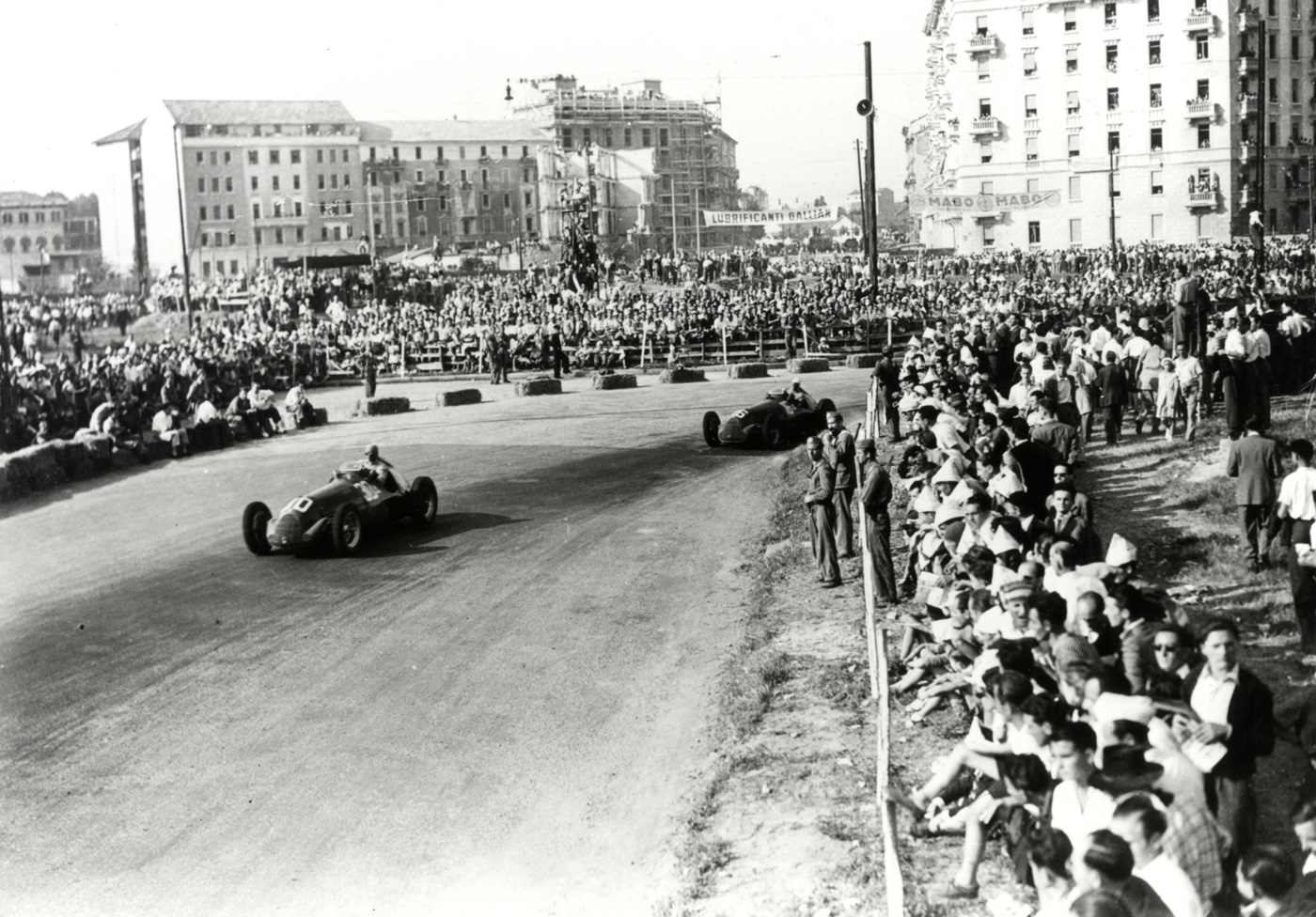
Italian Grand Prix, Milano September 7, 1947. Due to the unavailability of the Monza race track, flooded by the vehicles scrapped by the Allied Armies, the race was held in the streets of Milano, quite close to the Portello factory. Trossi is leading Varzi exiting the circle turn of piazzale Damiano Chiesa. Note the huge crowd, without protection as it was usual in the period.
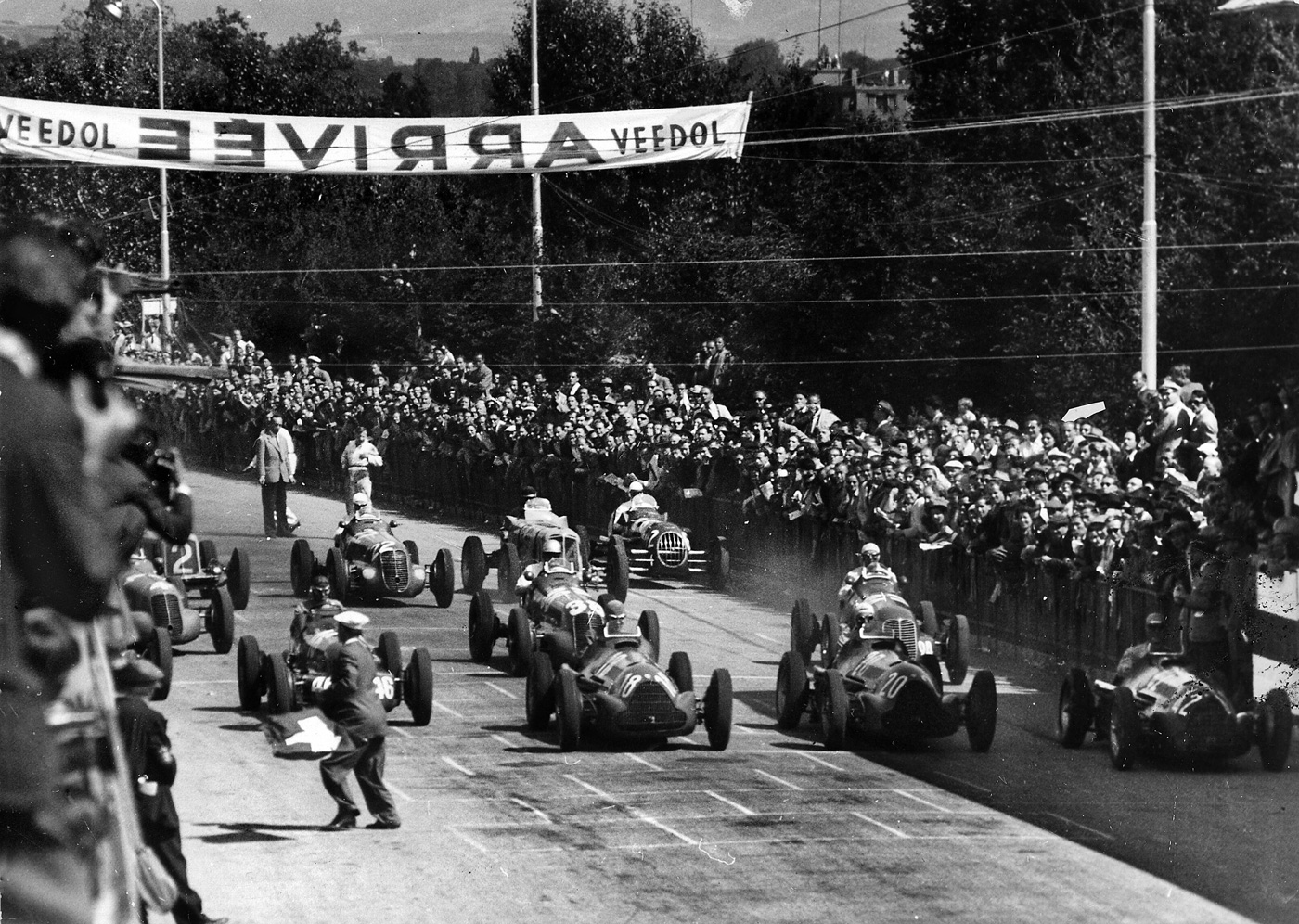
July 21, 1946. Grand Prix des Nations, Geneva (Switzerland). The start of the final. The three Alfa Romeo 158 are in the front row of the grid: no. 18 Wimille, no. 20 Trossi, no. 42 Farina, the winner. Covered by the starter who is running for his life, is Tazio Nuvolari, Maserati 4CL no. 46, who finished fourth trailing the three Alfa Romeos.
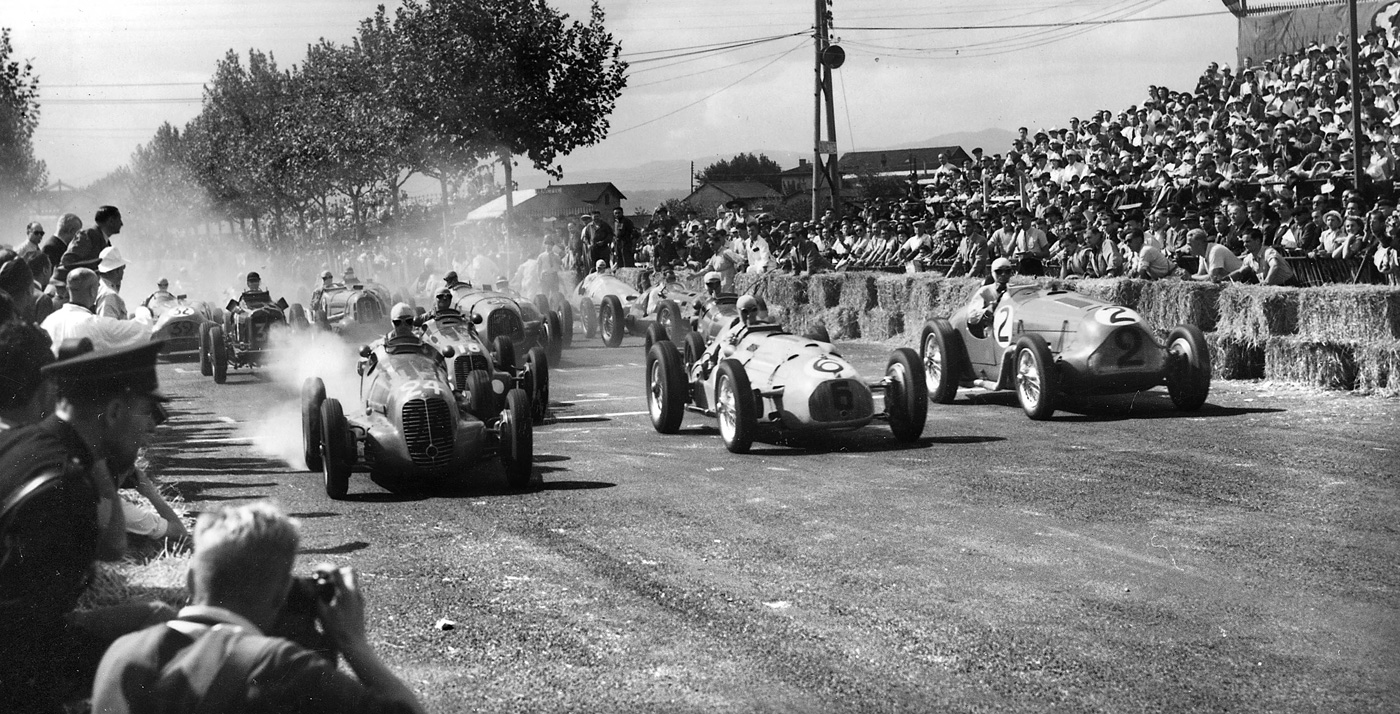
September 21, 1947. Grand Prix de l’Automobile Club de France, Lyon. The start. On the front row from the left: Henri Louveau (Maserati 4CL ), the winner Chiron (Talbot MC ), Eugène Chaboud (Talbot T26S Spl.).
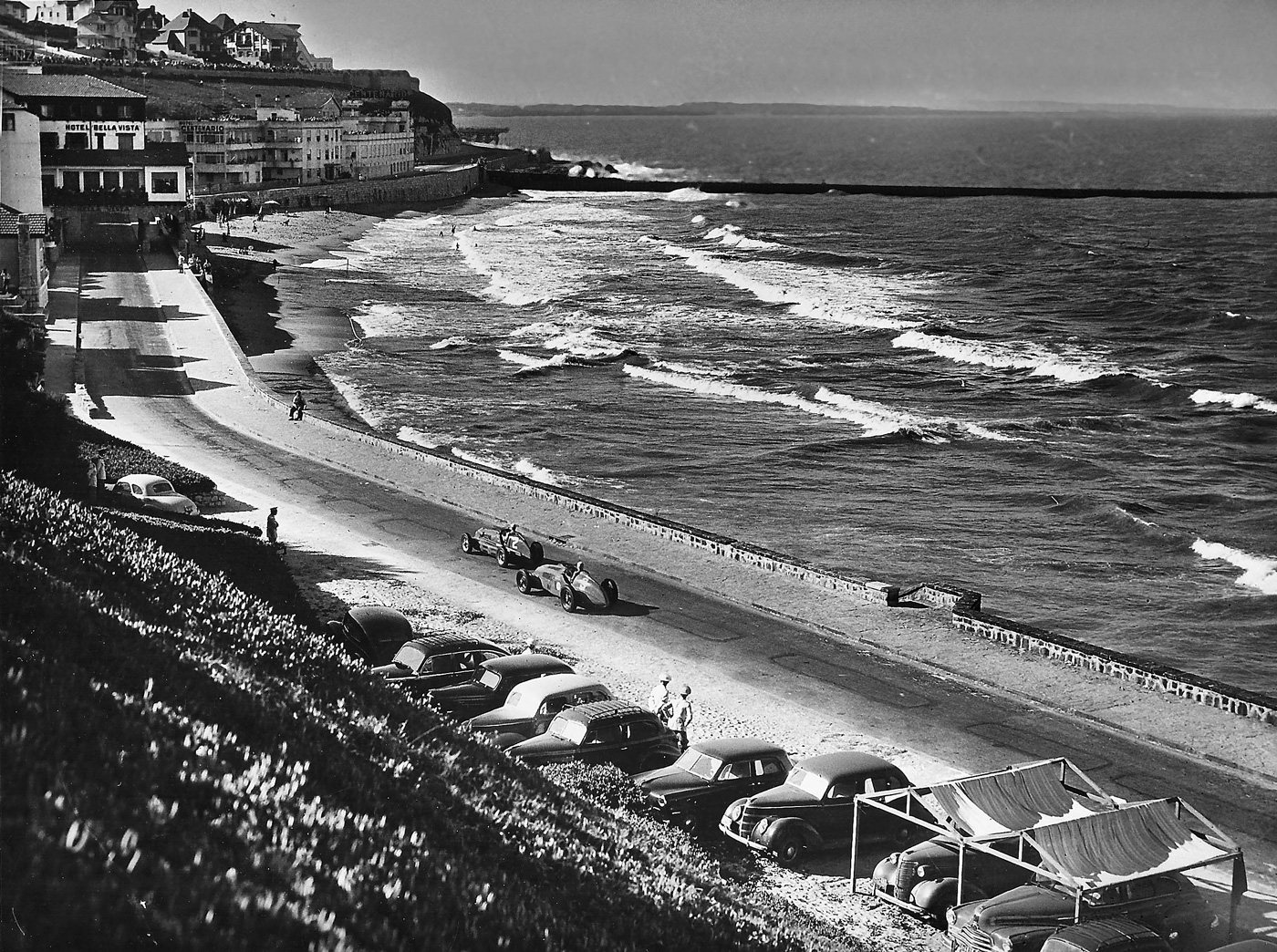
January 25, 1948 . Grand Prix Internacional del General San Martin, Mar del Plata (Argentina). Along the beautiful seashore, Enrico Platé (Maserati 4CL Platé) speeds ahead of Jean Pierre-Wimille ( Alfa Romeo 308) during practice. Nino Farina won on a Maserati 8CL. Wimille was third. Platé gave his mount to Chico Landi who finished eight, four laps behind the winner.
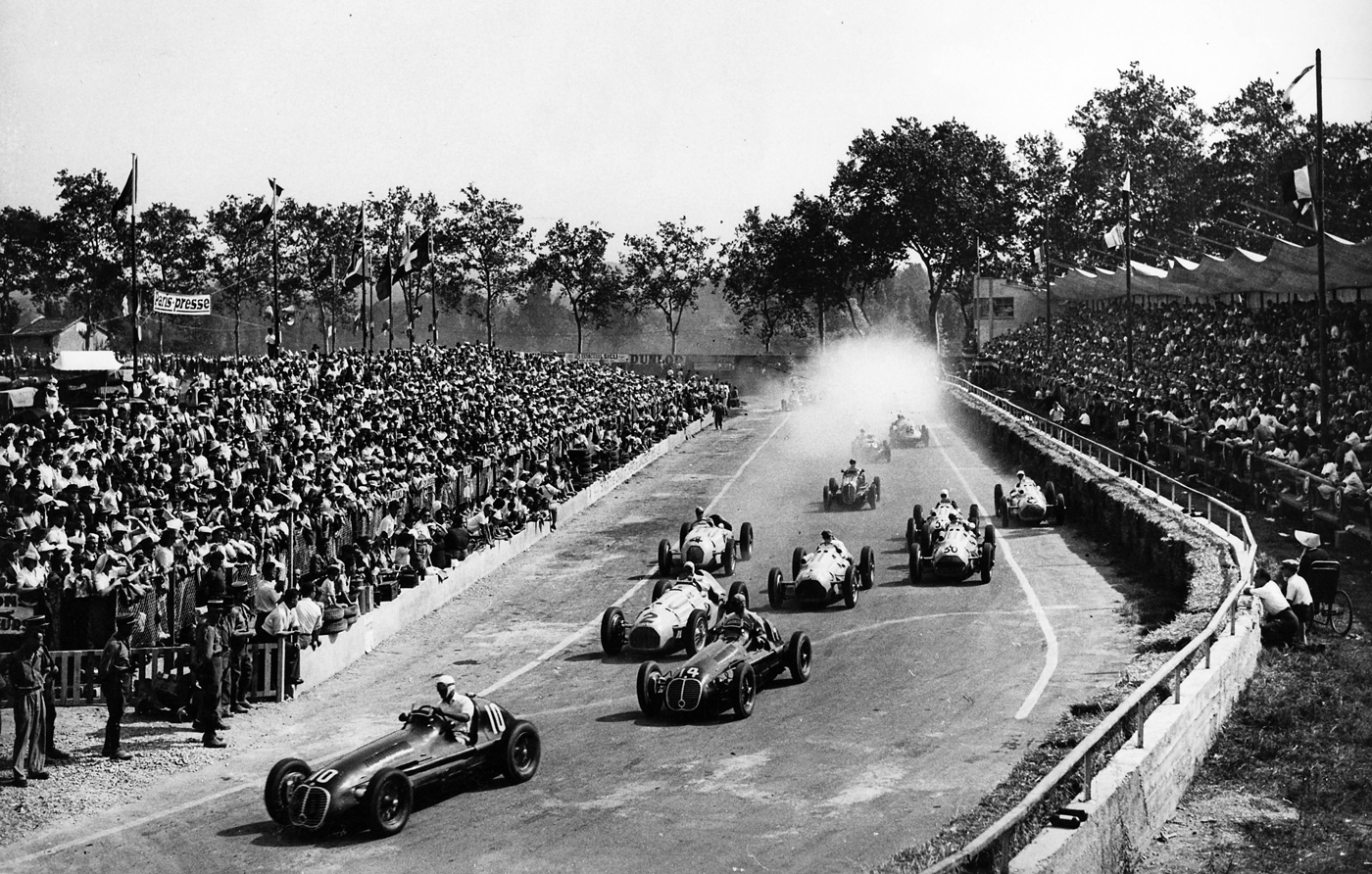
August 29, 1948. The start of the first heat of the Grand Prix d’Albi (France). Gigi Villoresi (Maserati 4CLT/48) is followed by Leslie Brooke (Maserati 4CLT/48 ). The first of the bunch of Talbots is the no. 2 driven by Louis Chiron. Villoresi won both heats and the aggregate classification. Brooke was third in the heat and eleventh overall. Chiron finished 15th in the heat and tenth overall.
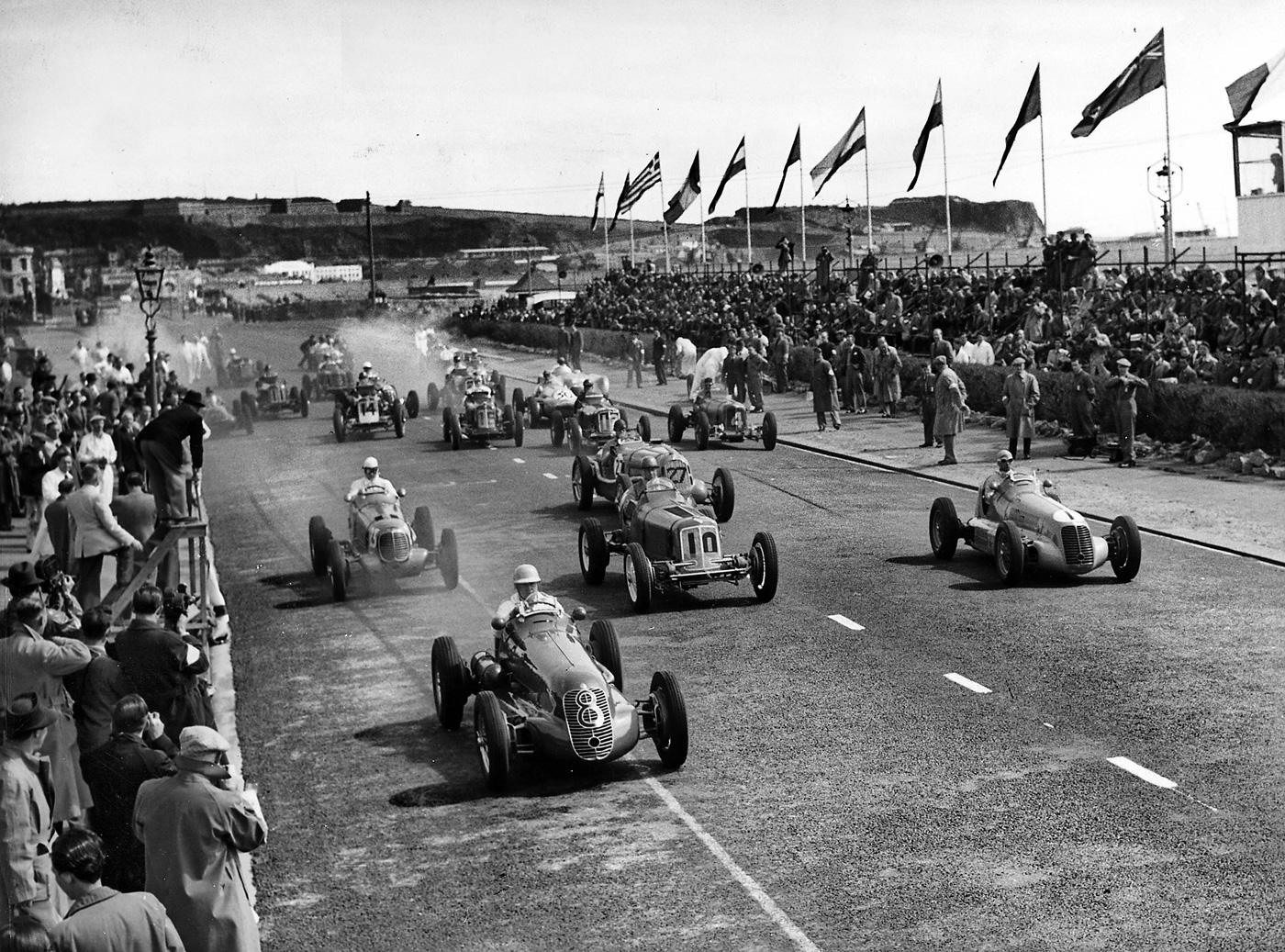
April 29, 1948. Jersey Road Race (United Kingdom). The start: Reg Parnell (Maserati 4CL no. 8) leads B. Bira (Maserati 4CL no. 1) and Bob Gerard (ERA R14B no. 10), the winner. Parnell was third and B. Bira fourth. Ten finished after 55 laps (453.2 m) out of 22 starters including Villoresi, Mays, Salvadori, Rolt, Abecassis.
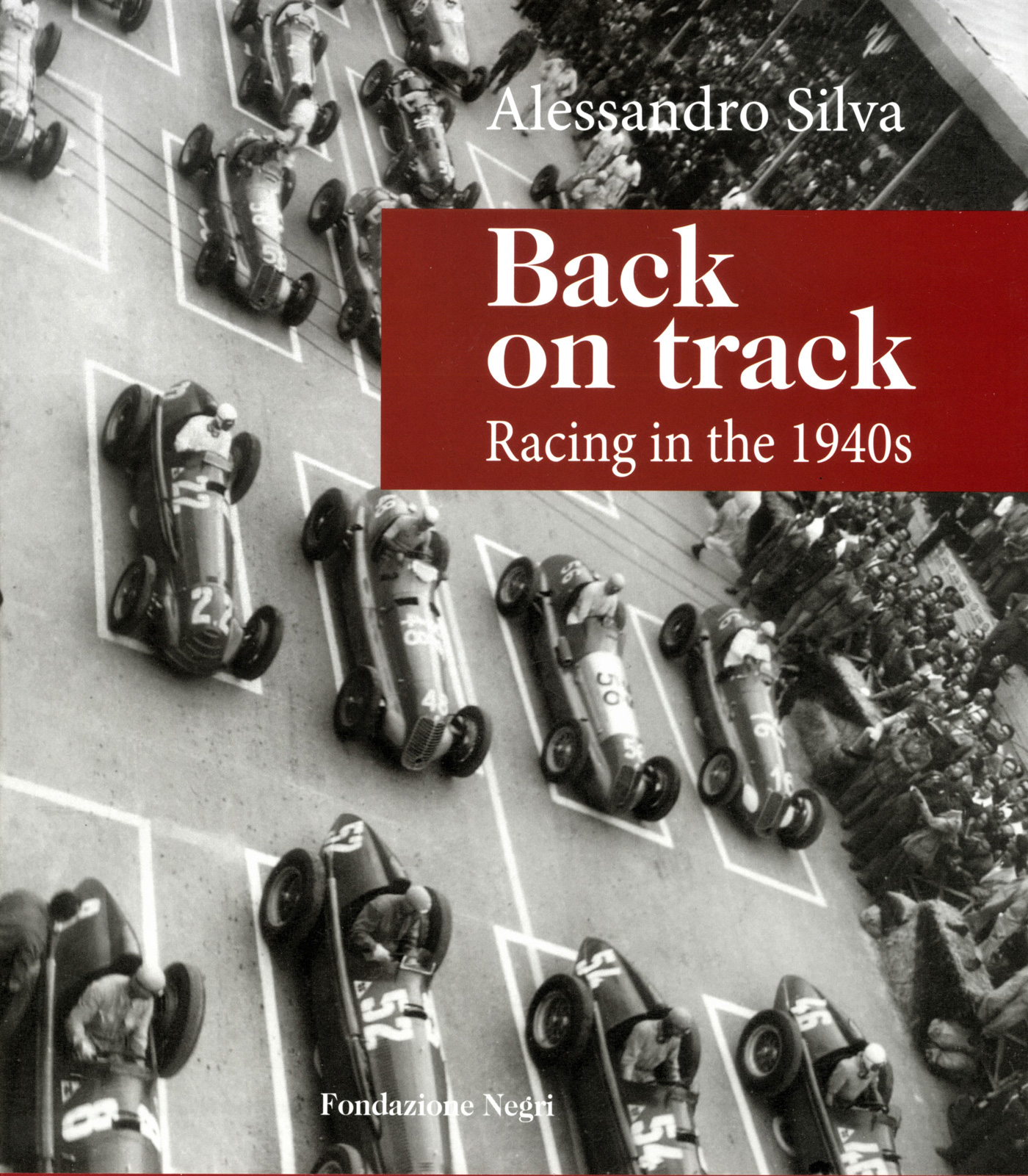
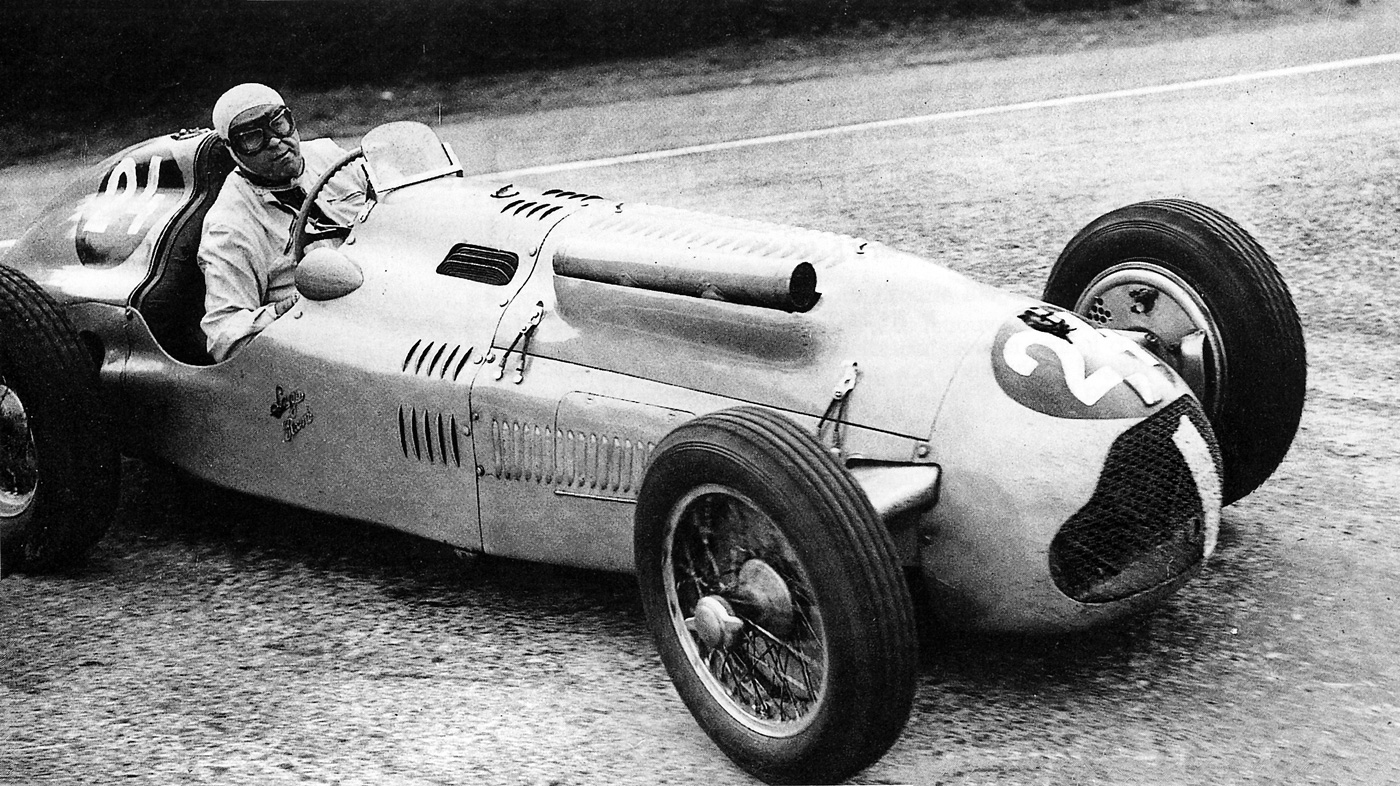
Aldo, Great review, I appreciate knowing the drawbacks as well as all the positives as I doubt that we will see it in many retail locations to help make the decision to purchase.. I agree with your appraisal as far as a research tool is concerned, a few changes and it would be perfect. It is great that it covers an area of racing history that is not well covered but weighing at over 10 pounds means it will be hard to read in bed!